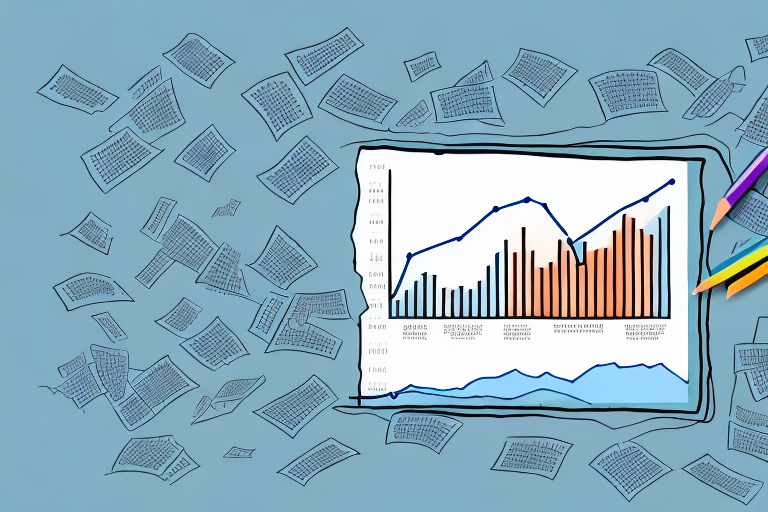Investing in High-Value Goods: How to Maximize Your Returns
Investing in high-value goods is a strategic move that can yield significant returns when executed with careful planning and informed decision-making. This comprehensive guide explores the various facets of investing in high-value goods, offering insights into understanding the concept, identifying valuable items, and implementing effective investment strategies. Whether you're a seasoned investor or new to the market, this article provides the knowledge necessary to maximize your returns on high-value goods investments.
Understanding the Concept of High-Value Goods
High-value goods are items with substantial market value and strong demand. These goods encompass a wide range of categories, including luxury watches, classic cars, fine wine, rare coins, fine art, and antique collectibles. Their value is often driven by factors such as limited supply, unique features, exceptional craftsmanship, and historical significance. According to a [ShipScience industry report], the global market for high-value goods has seen consistent growth, highlighting their potential as lucrative investments.
Investing in high-value goods can be highly rewarding, as these items often appreciate over time, leading to considerable financial gains. However, this investment avenue is not without risks. Market volatility, fluctuating demand and supply, and the challenges of verifying authenticity are significant considerations. Collaborating with reputable dealers and experts is crucial to mitigate these risks and ensure the integrity of your investments.
Additionally, the costs associated with storing and insuring high-value goods can impact overall returns. Specialized storage solutions and comprehensive insurance coverage are essential to protect your investments, and these expenses should be factored into your investment strategy.
Different Types of High-Value Goods for Investing
Investors have a plethora of high-value goods to choose from, each offering unique advantages and growth potential. Key categories include:
- Fine Art: Works by renowned artists can significantly appreciate in value over time.
- Classic Cars: Vintage automobiles, such as the Porsche 911 R, have demonstrated substantial value increases.
- Luxury Watches: Brands like Rolex and Patek Philippe are known for their enduring value.
- Rare Coins and Stamps: Collectibles with historical significance often see value appreciation.
- Fine Wine: Limited edition and aged wines can be profitable investments.
- Intellectual Property: Patents and trademarks represent intangible assets with investment potential.
Each category requires specific knowledge and expertise. Conduct thorough research and stay updated with market trends to identify the most promising investment opportunities. For detailed insights and current market analysis, refer to [ShipScience's research publications].
How to Identify High-Value Goods Worth Investing In
Successful investment in high-value goods begins with meticulous research and analysis. Key steps include:
- Market Trends: Analyze current and projected trends to identify goods with growth potential.
- Quality and Authenticity: Verify the authenticity and condition of the item through reputable sources.
- Provenance: Assess the item's history and origin to ensure its legitimacy and value.
- Rarity: Items with limited availability or unique features tend to appreciate more.
Collaborate with experienced dealers and appraisers to gain valuable insights into the investment potential of specific goods. Utilizing platforms that offer [expert guidance] can enhance your investment decisions.
Factors to Consider Before Investing in High-Value Goods
Before committing to an investment in high-value goods, consider the following factors:
- Budget and Risk Tolerance: Determine your investment capacity and comfort with potential losses.
- Storage and Maintenance Costs: Calculate expenses related to specialized storage and upkeep.
- Tax Implications: Understand the tax obligations associated with investment gains.
- Market Demand: Research the demand dynamics for the specific goods you're interested in.
- Seller Reputation: Ensure you're dealing with trustworthy and reputable sellers to avoid fraudulent activities.
Consult with financial advisors and tax professionals to navigate the complexities of investing in high-value goods. Resources from [ShipScience advisory services] can provide personalized guidance tailored to your investment goals.
Top Strategies for Maximizing Returns on Your Investment in High-Value Goods
Implementing effective investment strategies is essential for maximizing returns. Consider the following approaches:
- Diversified Portfolio: Spread investments across various high-value goods to balance risk.
- Focus on Proven Appreciators: Invest in items with a track record of value increase and sustained demand.
- Long-Term Investment: Adopt a long-term perspective to allow investments to appreciate fully.
- Stay Informed: Continuously monitor market trends and industry developments.
Engage with industry experts, participate in investment forums, and subscribe to [ShipScience's newsletter] to stay informed and make data-driven investment decisions.
Proper storage and maintenance are also critical. Invest in high-quality storage solutions and regular maintenance to preserve the condition and value of your high-value goods.
Conducting a Market Analysis Before Investing in High-Value Goods
A thorough market analysis is fundamental to making informed investment decisions. Key components of market analysis include:
- Demand and Supply Dynamics: Assess current demand levels and supply constraints for the goods.
- Historical Sales Trends: Analyze past sales data to identify growth patterns and valuation trends.
- Price Points: Evaluate current market prices and forecast future price movements.
- Competition: Understand the competitive landscape and the presence of other investors.
- Regulatory Environment: Stay informed about regulations that may impact the market.
Utilize resources such as [ShipScience's market analysis reports] to gain comprehensive insights and enhance your investment strategy.
The Importance of Diversifying Your Portfolio When Investing in High-Value Goods
Diversification is a key strategy to mitigate risks and optimize returns in high-value goods investment. By spreading investments across different categories, you reduce the impact of market volatility on your overall portfolio. Benefits of diversification include:
- Risk Mitigation: Balancing investments across various goods minimizes the risk associated with any single asset.
- Capitalizing on Multiple Markets: Different high-value goods may perform well under varying market conditions.
- Enhanced Returns: Diversification allows you to tap into multiple growth opportunities simultaneously.
For example, if the art market experiences a downturn, investments in rare coins or fine wine may continue to appreciate, maintaining the stability of your portfolio. Expert guidance from [ShipScience's diversification strategies] can help you effectively balance your investments.
Tips for Successful Investment in High-Value Goods: Dos and Don'ts
To navigate the high-value goods investment landscape successfully, adhere to the following dos and don'ts:
Do:
- Thoroughly research market trends and dynamics.
- Work with reputable dealers and brokers.
- Diversify your portfolio to balance risk and returns.
- Invest with a long-term perspective and avoid impulse purchases.
- Regularly assess and adjust your investment strategy based on market changes.
Don't:
- Invest more than you can afford to lose.
- Overlook the costs of storage, security, and maintenance.
- Rely solely on past performance as an indicator of future returns.
- Forget to account for the tax implications of your investments.
- Ignore the importance of verifying the authenticity and provenance of items.
Common Mistakes to Avoid When Investing in High-Value Goods
Avoiding common pitfalls can significantly enhance your investment outcomes. Key mistakes to steer clear of include:
- Lack of Due Diligence: Failing to thoroughly research and verify the authenticity of high-value goods can lead to costly investments.
- Overconcentration: Investing heavily in a single category increases exposure to market-specific risks.
- Ignoring Market Trends: Staying uninformed about market developments can result in missed opportunities or unfavorable investments.
- Underestimating Costs: Neglecting to account for storage, insurance, and maintenance expenses can erode investment returns.
- Emotional Investing: Making investment decisions based on emotions rather than data and analysis can lead to poor outcomes.
Ensure comprehensive research and maintain a disciplined investment approach to avoid these common mistakes.
How to Stay Ahead of the Competition When Investing in High-Value Goods
Staying competitive in the high-value goods market requires proactive strategies and continuous learning. Here are effective ways to stay ahead:
- Continuous Education: Stay updated with the latest market trends, industry news, and investment strategies through [ShipScience's educational resources].
- Networking: Engage with industry experts, attend auctions, and participate in investment forums to gain valuable insights and opportunities.
- Market Monitoring: Regularly track the performance of your investments and adjust your strategy based on market developments.
- Leveraging Technology: Utilize digital tools and platforms for market analysis, tracking investment performance, and managing your portfolio efficiently.
By adopting these strategies, you can maintain a competitive edge and maximize your investment potential in the high-value goods market.
Real-life Examples of Successful Investments in High-Value Goods
Real-life case studies illustrate the potential of investing in high-value goods. For instance, the original Porsche 911 R, purchased in the 1960s for approximately $8,000, was sold in 2019 for $1.3 million, highlighting a substantial appreciation in value. Similarly, certain fine art pieces by renowned artists have appreciated exponentially, offering investors significant returns.
However, it's important to recognize that not all investments yield similar outcomes. Success depends on various factors, including market conditions, the item's rarity, and the investor's ability to conduct thorough research. For more detailed examples and analysis, refer to [ShipScience's case studies].
Understanding the Risks Involved in Investing in High-Value Goods
Like any investment, high-value goods come with inherent risks that must be carefully managed:
- Market Volatility: Fluctuations in market demand and economic conditions can impact the value of high-value goods.
- Theft and Damage: High-value items are targets for theft and require secure storage solutions to prevent damage.
- Fraudulent Activities: The presence of counterfeit items necessitates vigilance in verifying authenticity.
- Liquidity Issues: Some high-value goods may not have a readily available market, making them difficult to sell quickly.
- Regulatory Changes: Changes in laws and regulations can affect the legality and value of certain high-value goods.
Mitigate these risks by conducting thorough due diligence, investing in insurance, and maintaining a diversified portfolio. For risk management strategies, explore [ShipScience's risk management resources].
The Role of Technology and Digitalization in Investment Planning for High-Value Goods
Technology and digitalization have revolutionized investment planning for high-value goods by enhancing transparency, accessibility, and efficiency. Key technological advancements include:
- Blockchain Technology: Provides immutable records of ownership and provenance, reducing the risk of fraud.
- Digital Platforms: Enable investors to access a wider range of high-value goods and conduct transactions securely online.
- Data Analytics: Advanced analytics tools offer deep insights into market trends, pricing strategies, and investment performance.
- Virtual Auctions: Expand access to auctions and rare items globally, increasing investment opportunities.
Embracing these technologies can streamline investment processes and provide a competitive advantage. For more information on leveraging technology in your investments, visit [ShipScience's technology insights].
Legal Considerations for Investors Engaged in Trading of High-Value Goods
Investing in high-value goods involves navigating complex legal landscapes to ensure compliance and protect your investments. Key legal considerations include:
- Regulatory Compliance: Adhere to laws governing the trade of specific goods, such as import/export regulations and cultural heritage laws.
- Ownership Rights: Ensure clear and legally binding titles to avoid disputes over ownership.
- Tax Obligations: Understand the tax implications of buying, owning, and selling high-value goods, including capital gains tax.
- Contractual Agreements: Draft comprehensive contracts when purchasing or selling high-value goods to protect your interests.
- Intellectual Property Rights: Safeguard any patents, trademarks, or copyrights associated with your investments.
Consult with legal experts specializing in high-value goods to navigate these considerations effectively. [ShipScience's legal services] can provide tailored advice to ensure your investments are legally sound.
Conclusion
Investing in high-value goods offers a compelling opportunity to maximize returns, provided it is approached with strategic planning, thorough research, and informed decision-making. By understanding the nuances of high-value goods, diversifying your investment portfolio, and staying abreast of market trends and technological advancements, you can enhance your investment outcomes. Always consider the associated risks and legal implications, and seek expert guidance to navigate the complexities of this investment landscape. With the right approach, investing in high-value goods can be a rewarding addition to your overall investment strategy.






















